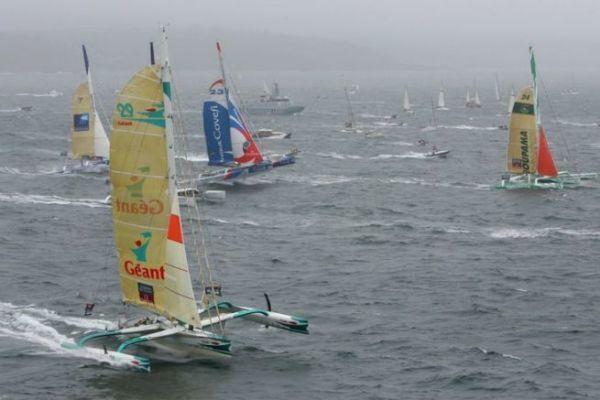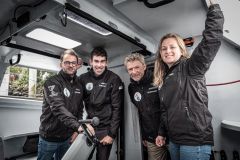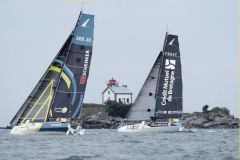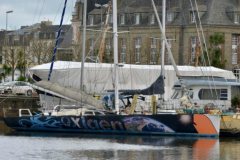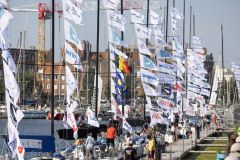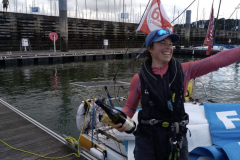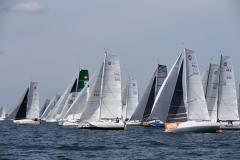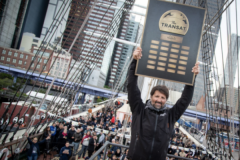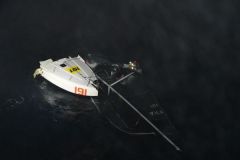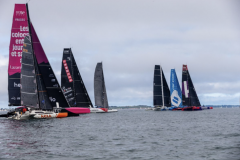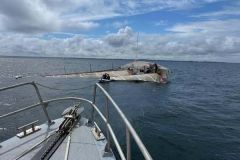Create a single-handed transatlantic race linking the Old Continent to the United States
64 years after the first edition and eight years after the last, The Transat CIC - originally named the Transat Anglaise - returns in April 2024 for its 15th edition. The race was born, in 1960, on the initiative of two men, Herbert Hasler and Francis Chichester. The former a former Royal Marine and World War II hero, the latter an aviation ace. Both were passionate about sailing. Hasler dreamed of a single-handed transatlantic sailing race from east to west, linking Europe to the United States. But the project was criticized as insane.
However, thanks to the arrival of The Observer newspaper as main partner, the project was born. 115 people showed interest in the project, and 50 applications were received, but only 5 people set off from Plymouth for New York. This first edition was won by Sir Francis Chichester on Gispy Moth III, in 40 days and 12 hours. It also marked the advent of a new solo race, one of the most difficult, to be organized every four years.
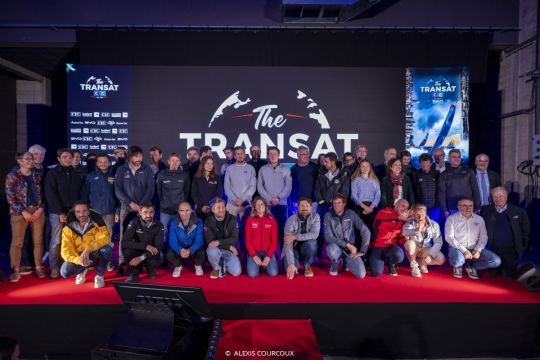
An entry into ocean racing legend
The following edition, christened OSTAR for Observer Single-handed Trans-Atlantic Race, in homage to the sponsoring newspaper, was to spawn a French sailing legend. However, he was not the first Frenchman to take part in the race, having been preceded by Jean Lacombe, in 1960, on a 6.50 m Cape Horn designed by J.J. Herbulot and built at the Jouët shipyards, who finished 5th.
In 1964, Eric Tabarly, then a young naval officer, had a 13 m ketch, Pen Duick II, specially built for the race. He won the race in just 27 days, and introduced ocean racing to France. Four years later, the sailor repeated the operation, and was even allowed to race down the Champs-Élysées, cheered on by the crowds.

Evolving with each new edition
The Transat Anglaise has changed names according to its sponsors: Carlsberg Star in 1988, Europe 1 Star in 1992 and 1996, then Europe 1 New Man Star in 2000, it was renamed The Transat in 2004, and The Transat Bakerly in 2016. Since 2019, it has been sponsored by the CIC bank. It also hosts several classes depending on the year, monohulls and/or multihulls. The 2024 edition will welcome IMOCA and Class40 boats, as well as a Vintage class. Start and finish towns will also vary from one edition to the next, with Plymouth giving way to Brest in 2020, then Lorient in 2024 and 2028, and New York sometimes being preferred to Newport, Boston or Charleston, depending on the edition. The 2024 edition will return to the "Big Apple".
The consecration of great French sailors
The Transat has been the crowning glory of many a French sailor, including Yvon Fauconnier in 1984 and Phillippe Poupon in 1988. Loïck Peyron won the race three times: 1992, 1996 and 2008. Francis Joyon was the first to break the 10-day barrier in 2000. Michel Desjoyeaux added the race to his list of victories in 2004. In 2016, the last edition of the race - the 2020 edition having been cancelled due to the Covid - saw four winners: François Gabart in the Ultim class, Gilles Lamiré in the Multi50 class, Armel le Cléac'h in the IMOCA class and Thibaut Vauchel-Camus in the Class40 class.
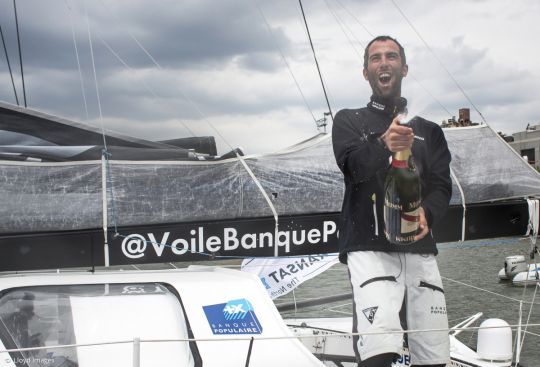
A rough, unchanged North Atlantic route
The race may have evolved over 60 years, but the course remains largely unchanged. Raced in the North Atlantic, it has a reputation for being tough, both in terms of weather and sea conditions. As race director Francis Le Goff points out, it's the only transatlantic race starting from France to have such a northerly route. The principle is simple: a solo race against currents and prevailing winds. The course is free, there are no waypoints, and the fastest route is not necessarily the most direct, as Francis Le Goff explains once again: "The course is open, even if the most direct route takes you north, up towards Newfoundland, but not necessarily the fastest."
On this 2024 edition, it will feature a novel 3,000-mile course between Lorient and New York, the race's finish city for the 3rd time, after 1960 and 2016.
The conditions encountered by the competitors will be difficult, with upwind sailing for several days and perhaps a little downwind. Nothing is less certain. These demanding pre-Vendée Globe conditions are a godsend for the 33 IMOCA boats that will be setting off on their round-the-world assault later this year. The former could take around 8 days to complete the course, the 13 Class40s 5 days longer. The finish line will close on May 19, 2024 at 11:02 UTC.
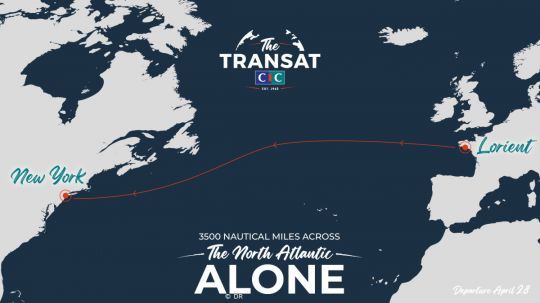
Technical stopovers and cetacean conservation
Technical stopovers will be authorized in agreement with the race management on the place to stop and the repairs to be carried out. However, sailors will find very few places to stop off along the way. Finally, introduced for the first time on the Ultim round-the-world race in January 2024, cetacean protection zones (ZPC) will be set up on The Transat CIC.


